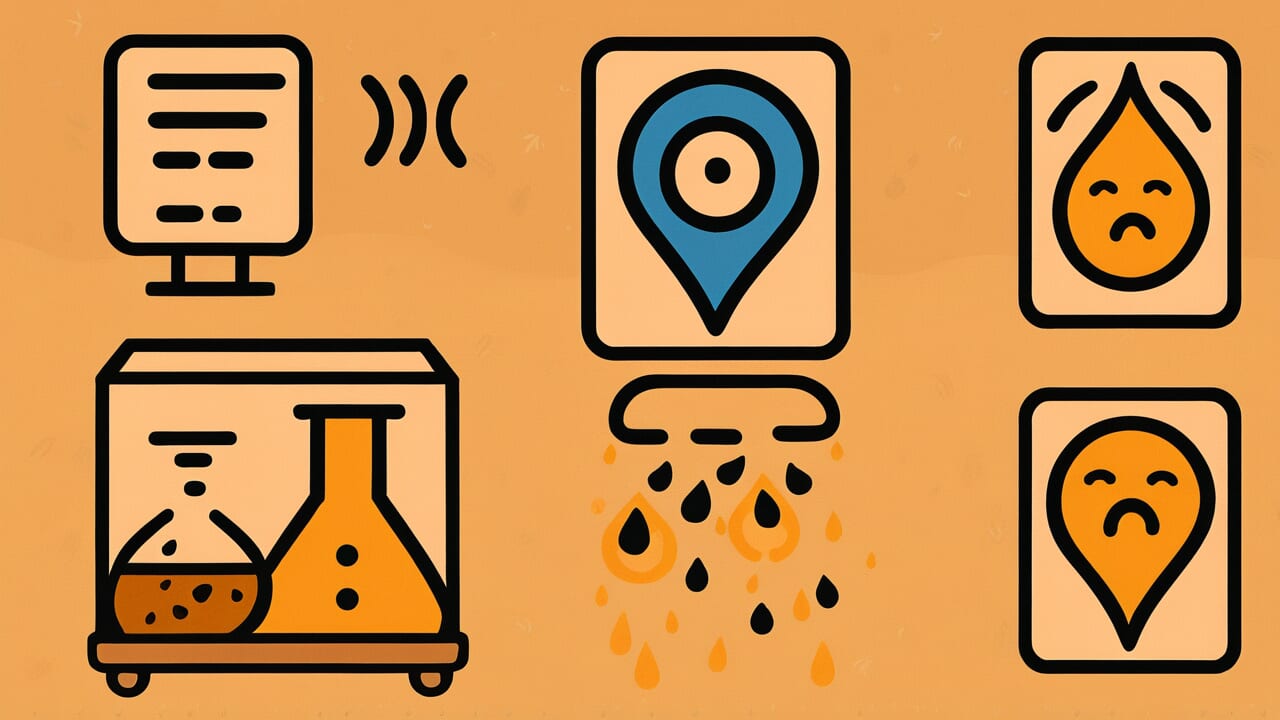How to Read “Nine is illness, five and seven are rain, four is drought, six and eight are wind”
Kyu wa yamai, go shichi wa ame ni yottsu hideri, muttsu yattsu naraba kaze to shirubeshi
Meaning of “Nine is illness, five and seven are rain, four is drought, six and eight are wind”
This proverb teaches a traditional method of predicting disasters based on the zodiac year.
Specifically, it suggests that in the Year of the Monkey (ninth position), illness spreads easily. In the Years of the Dragon and Horse (fifth and seventh positions), rain is abundant.
In the Year of the Rabbit (fourth position), drought is likely. In the Years of the Snake and Sheep (sixth and eighth positions), wind damage is common.
People used this proverb when planning farm work or preparing for disasters. In times without scientific weather forecasts, they needed some kind of guidance.
By connecting predictions to the zodiac system that everyone knew, this knowledge became easy to remember and share.
Today we consider this superstition without scientific basis. But we can understand it as the result of people’s efforts to find patterns from experience when facing an uncertain future.
Origin and Etymology
The exact origin and first written appearance of this proverb are unfortunately not well documented.
However, based on its content, it likely comes from folk wisdom about disaster prediction passed down through Japanese farming communities.
The proverb’s structure uses numbers: “nine,” “five and seven,” “four,” and “six and eight.” These numbers refer to positions in the twelve-year zodiac cycle.
The zodiac starts with the Rat as number one. So nine is the Monkey, five is the Dragon, seven is the Horse, four is the Rabbit, six is the Snake, and eight is the Sheep.
Since ancient times, Japanese people used the zodiac to mark years and predict fortune and weather. When agriculture was central to life, weather prediction was a matter of survival.
Without scientific forecasts, people tried to find connections between zodiac signs and disasters through years of experience and observation.
These predictive teachings spread by word of mouth among farmers. They served as reference points when planning agricultural work.
From a modern perspective, this may seem like superstition. But for people of that time, it was serious wisdom for preparing for an uncertain future.
Usage Examples
- This is the Year of the Monkey, and “Nine is illness, five and seven are rain, four is drought, six and eight are wind” says illness is common, so I need to take extra care of my health
- According to “Nine is illness, five and seven are rain, four is drought, six and eight are wind,” the Year of the Dragon brings lots of rain, so managing water in the rice paddies might be easier
Universal Wisdom
This proverb reveals a universal truth about human nature. When facing uncertainty, people always try to find patterns.
In times without science, people drew rules from experience and observation. They organized these rules and passed them to the next generation.
From our modern view, there’s no scientific link between zodiac signs and disasters. But what matters here is humanity’s refusal to remain helpless before the unknown.
Even with imperfect knowledge, people desperately wanted some guidance rather than nothing at all.
This attitude continues today. We constantly seek patterns in stock prices, health superstitions, and success formulas.
Some are scientific, others are not. But the fundamental human desire to ease anxiety about the future and prepare for it never changes.
This proverb expresses humanity’s “desire for order” and “wisdom to prepare for the future.”
Even with crude methods, people don’t simply surrender to fate. They think, prepare, and take action. This proverb teaches us that essential human quality.
When AI Hears This
The relationship between lunar phases and weather was long dismissed as “unscientific superstition” by 20th-century meteorology.
But what’s interesting is that this proverb divides the lunar cycle into nine stages to predict weather patterns. It’s not simply “full moon means rain.”
It actually maps the continuous variable of lunar phase to meteorological phenomena. This is essentially data modeling.
The moon’s gravity affects not just oceans but also the atmosphere. This is called atmospheric tide.
Earth’s atmosphere presses on the surface with about 8 tons of pressure. The moon’s gravity causes this pressure to fluctuate slightly.
The variation is tiny, about 0.1 hectopascals. But since the 1960s, scientists have proposed that this small change could trigger shifts in unstable atmospheric pressure patterns.
In the 21st century, statistical analysis of over 100 years of weather data has found weak correlations between certain lunar phases and precipitation probability.
Correlation coefficients range from 0.1 to 0.2. Not strong enough for weather forecasting, but not zero either.
This proverb may have extracted a signal that’s statistically weak but real through generations of observation. Science once rejected it, but more precise science now reconsiders it.
This back-and-forth movement of knowledge reveals the depth of experiential wisdom.
Lessons for Today
This proverb teaches modern people the importance of maintaining a “prepared mindset” toward an uncertain future.
Zodiac-based disaster prediction itself isn’t scientific. But the underlying attitude of “always prepare because we don’t know what will happen” remains important today.
Modern society has far more accurate prediction tools like weather forecasts and risk analysis. Yet we still cannot perfectly predict the future.
Earthquakes, economic crises, pandemics, personal illness, and accidents will always happen unexpectedly.
What matters isn’t blindly trusting specific predictions. It’s maintaining a flexible attitude of “being ready to handle whatever comes.”
Health management, savings, insurance, and skill development support us no matter what disasters strike.
This proverb also teaches the importance of “respecting ancestral wisdom while critically examining it.”
We need both: valuing tradition while maintaining a scientific perspective. This balance is essential for living in the modern world.



Comments